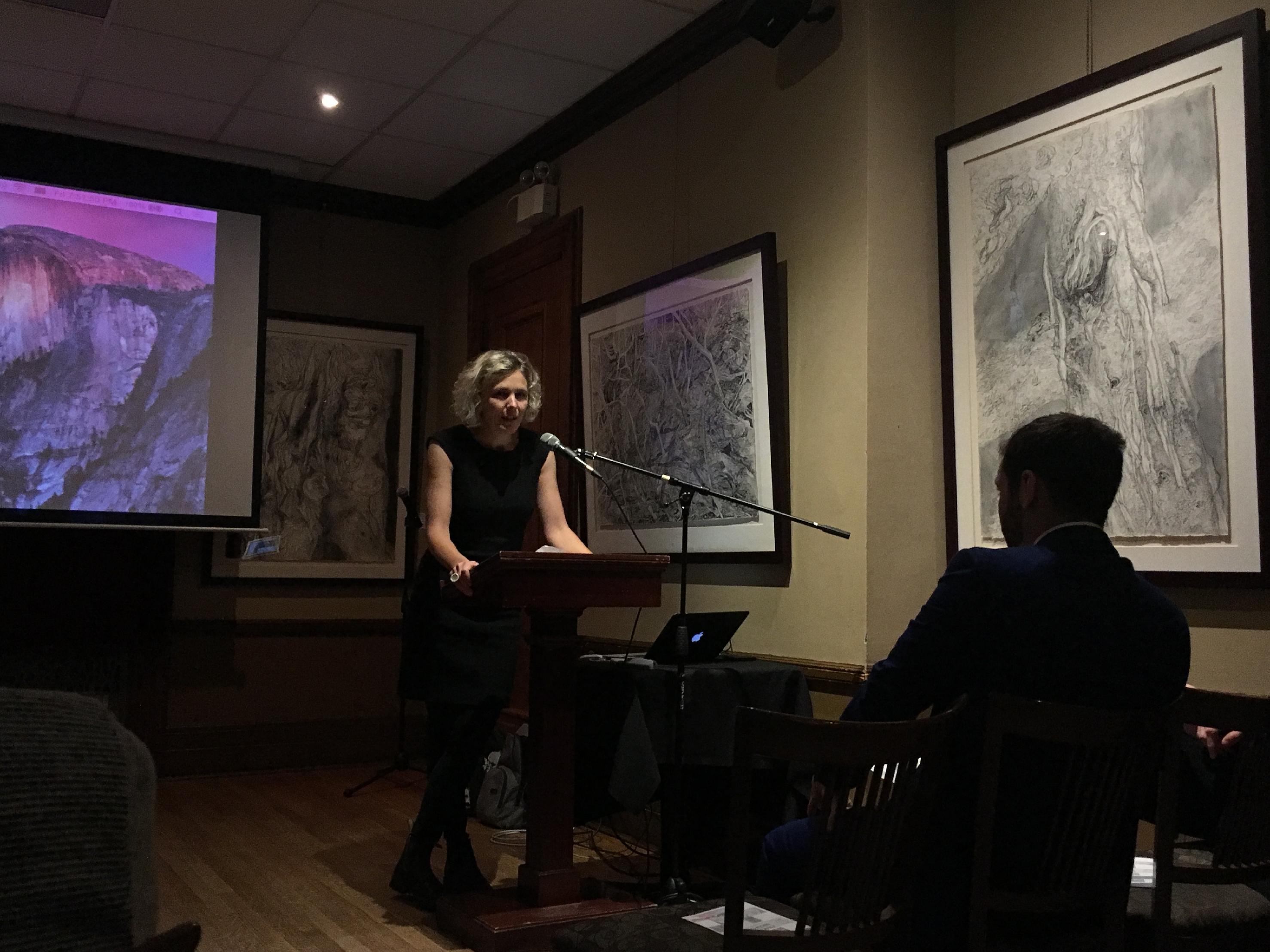To most people, the image of a farm on the outskirts of Montreal, the routine of a professional bodybuilder, and Afghan lullabies have little to do with one another. To students of the Anthropology department’s ANTH 408: Sensory Ethnography course, however, they represent the subjects of a semester’s worth of work documenting, creating, and reflecting upon the process of ethnographic filmmaking.
On January 20, held within the historic limestone walls of Thompson House, McGill’s Anthropology Students’ Association hosted the students, their friends, and professors of a class whose central work focused on sensory ethnography (a practice that privileges audiovisual representations of living subjects and rejects the mediation of dialogue, narration, or subtitles). Prefaced by a cocktail hour, this event provided its attendees an evening of food, drinks, and the chance to engage with the students whose work was showcased. With a set of topics as diverse as their approaches, the films were united under their rich cinematography, experimental approach to the traditional narrative, and the attempt to decode human understandings of the world.
Professor Lisa Stevenson, an associate professor in the department of Anthropology, stepped up to the podium. She expressed pride for her students, along with the central question of the night: what is the value of cinematography over traditional written works?
Developed largely during the 20th century – a time of expansion within the discipline of anthropology – ethnography grew out of the schools of cultural and social anthropology as an observation driven method of data collection. Moving beyond bound volumes of empirical analysis, sensory ethnography resides at the intersection of social science and aesthetics. Stevenson emphasized that, instead of drawing on prose as a method of documenting subjects, these student films drew primarily on the power of visual and auditory imagery in unearthing cultural idiosyncrasies. The practice aims to transform current ethnographic methods by creating new ways for researchers to engage with their audiences. The ultimate goal is to shift from data collection to practical knowledge.
What is the value of cinematography over traditional written works?
Through sensory stimulation, researchers elicit reflection and emotion from the viewer. Stevenson explained that although such a style of film might reflect an experimental quality, its loss of linear narrative is purposeful. Without narration or subtitles to guide the viewer, sensory ethnography leaves space for reflexivity and interpretation. Citing Polish anthropologist Bronislaw Malinowski, Stevenson explained that many of the films captured “the imponderabilia of everyday life.” This concept was articulated in films such as Delirium by Timothy Mapley and Rainy Day by Lara Esrey, both showcased at the event, which utilized repetition and routine in order to explore the monotony of consumerism.
Within their documentation of a professional bodybuilder’s daily regimen and an amateur boxing team, respectively, films such as Kinesthesia by Yuki Kasai-Pare and Underdog by Liona Gibbs-Bravo explored the relationship between the montage as a film technique and movement as a human experience. Seeking to show the self-discipline and strength of the human body when pushed to its physical limits, Kinesthesia coupled images of muscles in motion with classical music, the dynamics of which mirrored the intensity of weightlifting. By allowing the audience into their personal workout, the intimate perspective of the film, coupled with stimulating auditory cues, led the piece to succeed in conveying a personal pain that was palpable to the audience.
Instead of drawing on prose as a method of documenting subjects, these student films drew primarily on the power of visual and auditory imagery in unearthing cultural idiosyncrasies.
In contrast to the intensity featured in the aforementioned films, Natural by Julien Renaud and The Present Moment by April Barrett were powerful – but in subtle ways. The films evoked a sensory reaction through an exploration of stillness. Placid and serene, Natural explored nature in the absence of humans, meditating on the passing of time by filling the screen with images of farmland upon winter’s edge. Similar in its awareness of time, The Present Moment staged an encounter between the audience and a community of Roman Catholic nuns. Panning the bright corridors of a church, the smooth camera work enabled the hymnal chatter to prevail as a central feature.
As setting, motion, and sound all helped to develop a focus on what is expressed as sensory, the lighting – or lack thereof – in Sonoluminecnence by Alec Tilly and Lullaby for Kian by Homa Wahabi was equally characteristic of psychedelic trance as it was of the personal elements of one’s bedtime ritual. In the latter film, the tone of a grandmother reciting an Afghan lullaby to her grandchild created a sense of comfort and security. Though many people would not be able to understand her words, the soft, rolling sounds imparted a nostalgia to the moments between consciousness and the verge of being asleep.
Despite their diversity of subject and technique, the films were ultimately unified in their exploration of the use of affect and sensation to explore what it means to be human. Not only did each film succeed in showcasing the curiosity of their makers, but they also effectively passed on their reflexivity to those who had the pleasure of viewing them.

